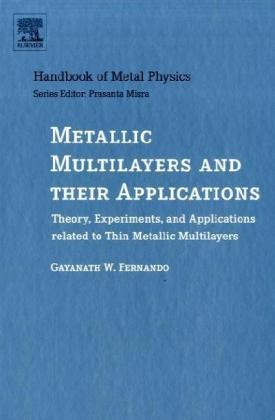Read more
Informationen zum Autor The author has worked on the theory of electronic and magnetic properties of surfaces! interfaces! multilayers and nanostructures during the past 20 years! having published numerous articles on the above topics. He has also taught related graduate courses such as solid-state physics and quantum mechanics during the past 15 years. I have published 100 research papers on magnetic! electric! optical and hyperfine properties of metals! alloys! crystalline and amorphous semiconductors. 10 students have completed their Ph.D. thesis under my supervision. I have been doing research on Heavy-Fermion Systems since 1982 and published several papers to explain their properties. Klappentext Describes the effect of a magnetic field on the electron transport leading to changes in the resistance. Other aspects of multilayers systems! such as stability! growth! confinement are addressed in this work. It describes the methods used in such work! with emphasis on density functional and spin density functional theories. Zusammenfassung Describes the effect of a magnetic field on the electron transport leading to changes in the resistance. Other aspects of multilayers systems! such as stability! growth! confinement are addressed in this work. It describes the methods used in such work! with emphasis on density functional and spin density functional theories.
List of contents
Chapter 1. GMR in Metallic Multilayers - a Simple Picture
Chapter 2. Overview of First Principles Theory: Metallic Films
Chapter 3. Thin Epitaxial Films: Insights from Theory and Experiment
Chapter 4. Magnetic Anisotropy in Transition Metal Systems
Chapter 5. Probing Layered Systems: a Brief Guide to Experimental Techniques
Chapter 6. Generalized Kohn-Sham Density Functional Theory via Effective Action Formalism
Chapter 7. MAgnetic Tunnel Jusctions and Spin Torques
Chapter 8. Confined Electronic States in Metallic Multilayers
Chapter 9. Half-Metallic Systems: Complete Asymmetry in Spin Transport
Chapter 10. Exact Theoretical Studies of Small Hubbard Clusters

